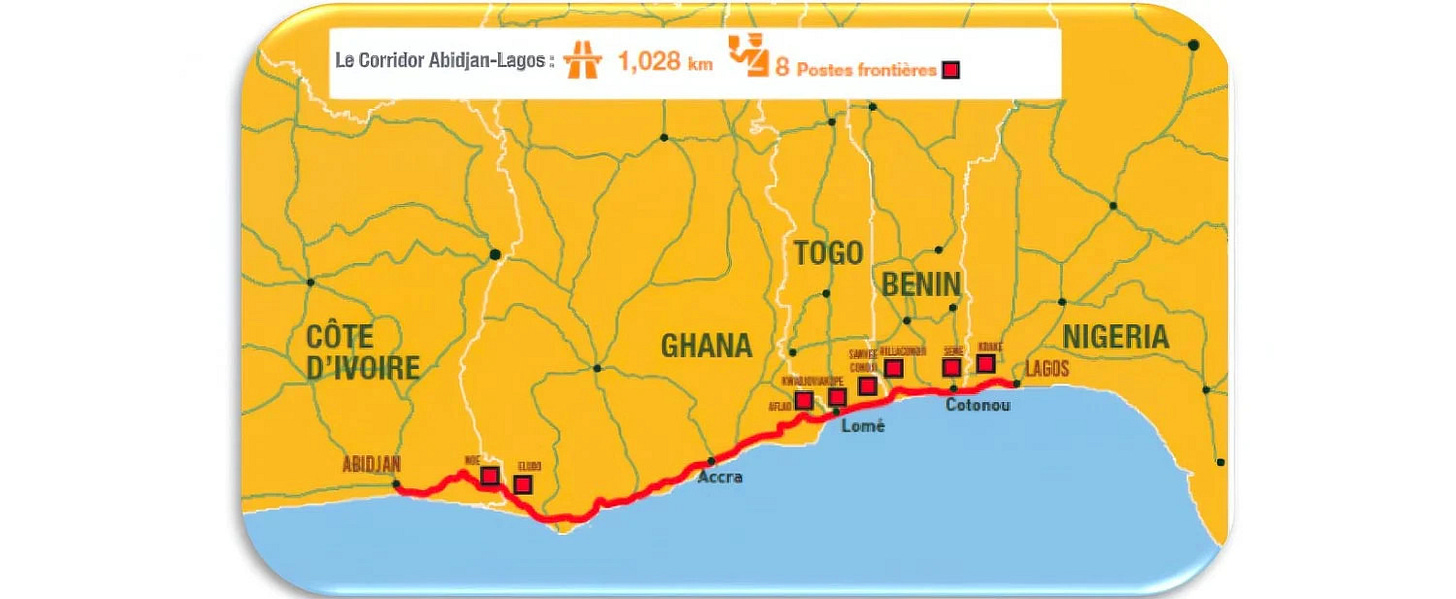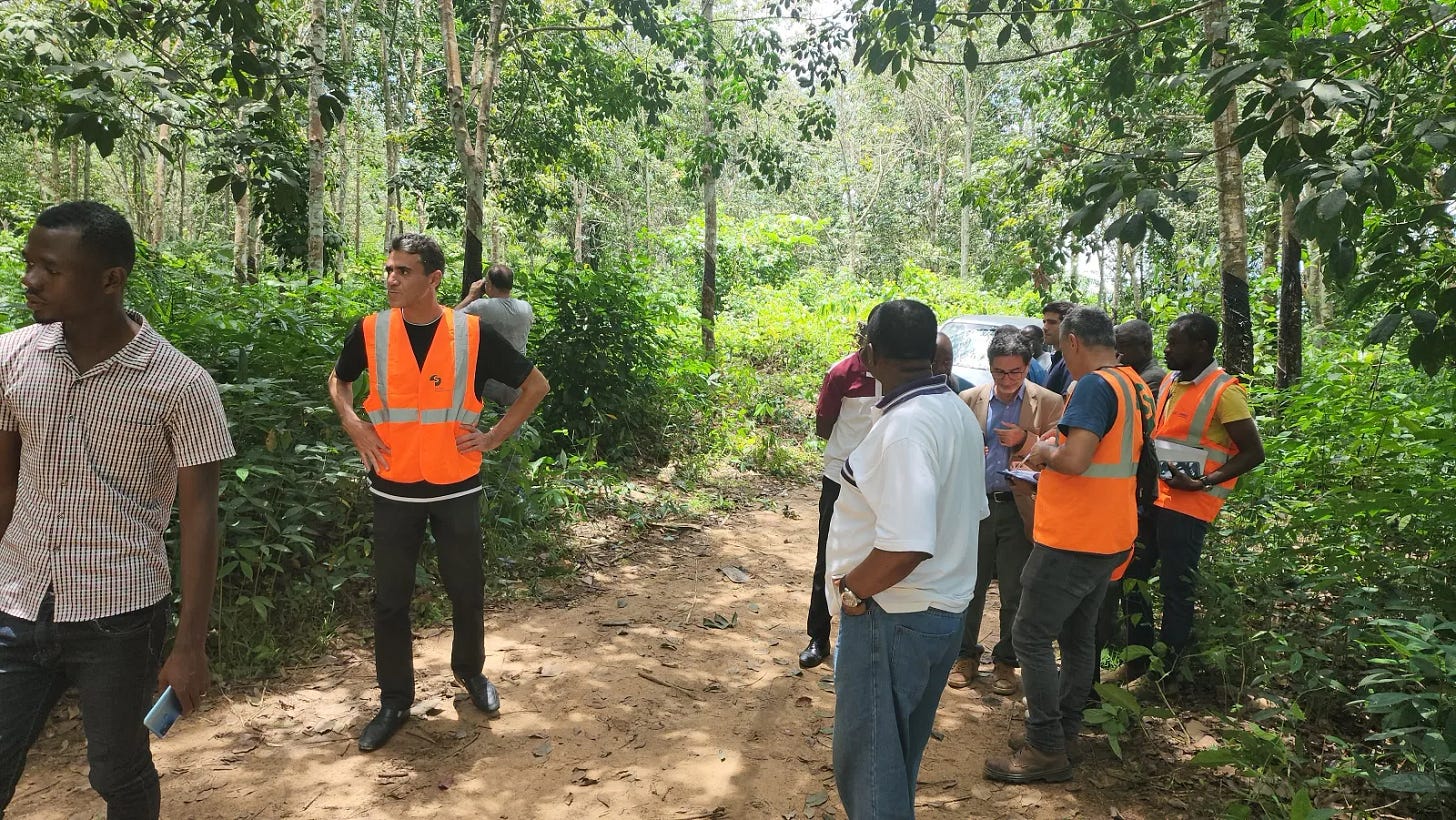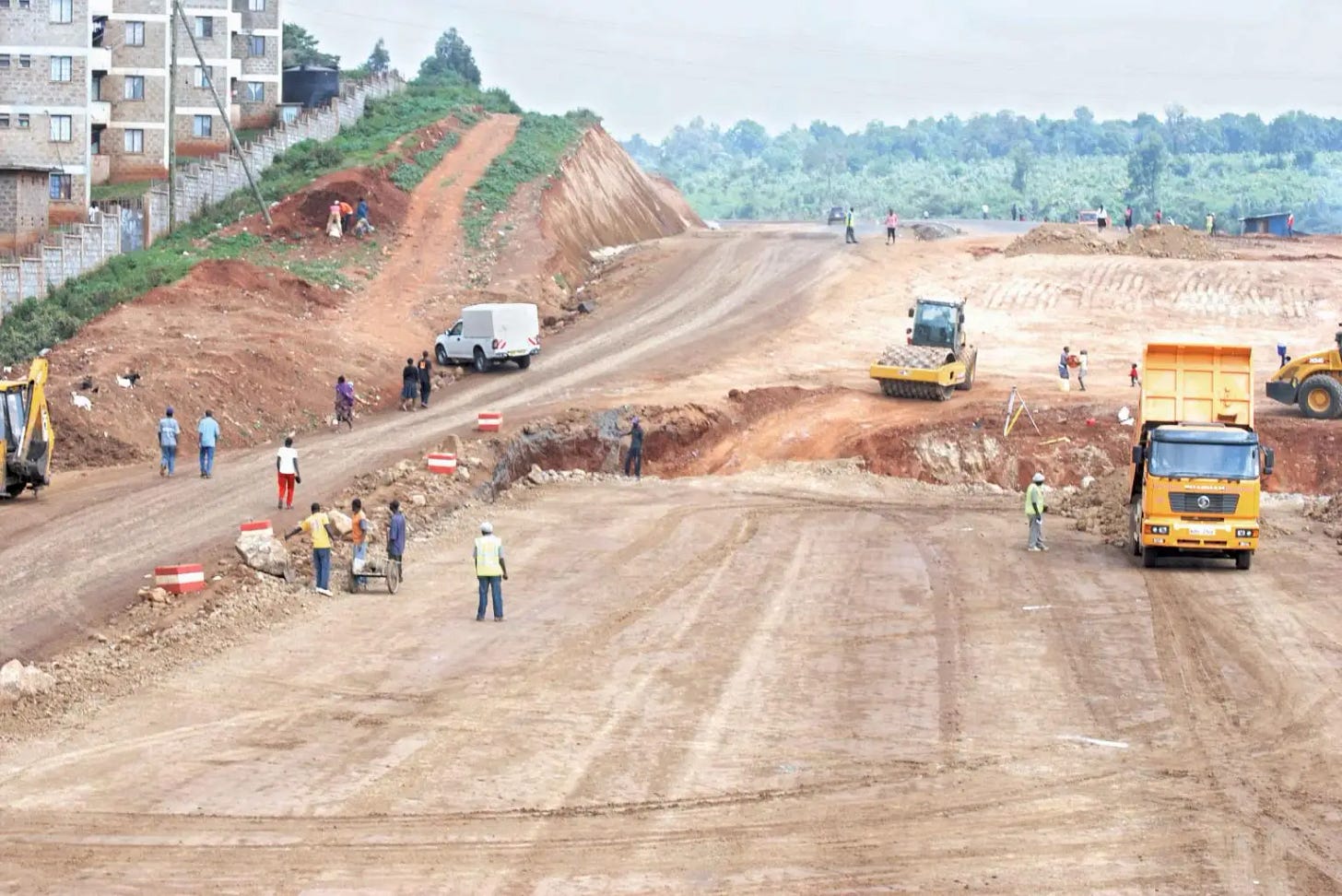West Africa's $15 Billion+ Highway
Can five countries build a 1,028km coastal corridor together?
Welcome back to the Off Site, brought to you, as ever, by Aphex.
West Africa is attempting something ambitious: building a highway across five countries. The Abidjan-Lagos Corridor will stretch 1,028 kilometres along the coast, linking Côte d'Ivoire, Ghana, Togo, Benin, and Nigeria in a six-lane highway that aims to transform regional trade.
The $15.6 billion project promises to connect nearly 40 million people and serve as the backbone of West African commerce. It's designed to link major ports, integrate economic hubs, and provide landlocked Sahel nations with better access to Atlantic shipping.
But coordinating construction across five different countries presents challenges that go well beyond typical highway engineering.
Why build across borders?
The corridor connects some of West Africa's most economically dynamic cities – from Abidjan through Accra, Lomé, and Cotonou to Lagos. According to the African Development Bank, the area’s collective urban population is expected to reach 173 million people by 2050.
As Mike Salawou explains, the goal is to create an "economic corridor approach" that supports major economic clusters and improves links between large urban centres and rural areas within all five countries. It’s an area that makes up 75% of West African trade — so a faster, better-connected route could have a huge impact on the regional economy.
The highway is also part of the larger Trans-African Highway Network, meaning it will eventually link to corridors that serve landlocked countries like Burkina Faso, Mali, and Niger. These inland nations currently rely on fragmented transport networks to reach coastal ports.
The project also runs parallel to existing infrastructure. The West African gas pipeline from Nigeria to Ghana covers over 80% of the corridor length, and several fibre optic projects follow similar routes.
A highway through West Africa
The route traverses a huge swathe of different landscapes.
Coastal sections face tidal surges and erosion, particularly around Lagos and Cotonou, which will require breakwaters and reinforced embankments for the huge highway.
Inland areas present different problems. Hilly regions in Ghana, including the Akwapim-Togo ranges, require extensive cut-and-fill earthworks. Nigeria's Badagry-Seme border stretch runs through waterlogged soil that will demand specialised piling techniques to stabilise the roadbed.
The highway must navigate ecologically sensitive lagoons, marshes (including parts of the Niger Delta), and flood-prone coastal plains. This requires elevated structures, reinforced foundations, and erosion-resistant designs in multiple locations.
Then there’s the challenges of urban areas. In densely built up cities like Lagos and Abidjan, construction demands land acquisition, resettlement, and careful integration with existing infrastructure.
Needless to say, all these are potential sources of delays and cost overruns.
The coordination challenge
Building across five countries means harmonising technical standards for everything from lane widths to signage. Each country has different procurement processes, regulatory frameworks and construction standards.
The Abidjan-Lagos Corridor Management Authority (ALCoMA) was established to streamline governance. And the whole project falls under the remit of ECOWAS — twelve countries who make up the Economic Community of West African States.
In a recent update on Nigeria’s progress, Federal Controller of Works Olukorede Kesha said that 46.2km of Nigeria’s 79-kilometre section has been awarded to as-yet-unnamed independent contractors. Work on it was due to start in May this year.
Another stretch of Nigeria’s section falls under the Federal Roads Maintenance Agency, and the first 10km of the corridor is managed by capital city Lagos’ state government.
This fragmented approach is necessary, given the array of governance structures. Still, it complicates overall project coordination. And these are just the regulatory bodies of one country — progress varies significantly across the region.
On a higher-level, the African Development Bank has invested in a spatial development initiative for the highway project, which has included coordinating international engineers from CPCS (Canada), Holland & Hausberger (South Africa) and Comete Engineering (Tunisia). It’s not clear which other contractors are involved, although independent contractors for construction will be selected through international tenders after the final design and financing phases conclude.
As might be becoming clear, bureaucratic hurdles persist in and across each nation.
Current construction reality
Despite all the promises, actual construction remains limited. The highway's design includes four to six lanes in most sections, expanding to eight lanes approaching Lagos.
Current work focuses on three-lane carriageways, currently without service lanes. Future plans include potential light rail and bus rapid transit corridors to serve local communities, but these remain aspirational. 63 interchanges have also been planned across the entire stretch.
The project also requires linking the highway to ports, inland corridors, and eight border posts. Elevated interchanges and smart toll systems are planned to manage traffic, though how these will be implemented remain unclear.
Funding and timeline
The African Investment Forum pledged $15.6 billion USD in potential investment in 2021, but securing actual funding has proven difficult. The project relies on blended financing from the African Development Bank, EU, and private partnerships — and it’s not clear what the total price-tag will be, although most sources suggest it is around the $15B mark.
Progress has been slow. Delays in securing funds and land rights mean that, despite the project launching in 2017, most progress has been in the form of preparatory studies and financing agreements.
With a few regional variations, most work was supposedly due to commence in 2026 for completion by 2030. As mentioned, Nigeria has already started on smaller sections that will be linked up as other countries complete their part of the project.
The ECOWAS website maintains an active presence, and regularly reports on stakeholder meetings, steering committees, and workshops. The sustained diplomatic energy suggests serious commitment, but moving from meetings to actual construction has proven challenging.
So, will it actually happen?
The project's economic potential is clear. Connecting major West African cities and ports through improved infrastructure should boost regional trade and integration. And, while significant, the engineering challenges are solvable with sufficient resources and expertise.
Coordinating five governments, their different standards, and competing political priorities may prove more difficult.
Each country faces domestic pressures that could affect their commitment to the regional project. Economic downturns, political changes, or competing infrastructure priorities could derail progress in any of the countries.
For now, the Corridor exists primarily as feasibility studies, MOUs, and diplomatic initiatives.
On the pod
This week on the pod, the team look at Japan's $60 billion Chuo Shinkansen Maglev project; Germany’s €500 billion infrastructure fund; and how construction tech companies manage to explain — or not — what exactly they do.






